With the arrival of 2025, it’s clear that the social media landscape is rapidly evolving.
As algorithms and consumer behaviors continue to change and evolve, your brand will need to take a fresh look at its social media marketing strategy if you want to stay visible and effectively engage your audience.
We’ll explore some practical steps you can take to revamp your social media strategy in the new year.
From setting clear goals and KPIs, defining your target audience, strategically selecting platforms, crafting shareable content, and optimizing engagement, you’ll learn how to prepare yourself for what may just be a social media revolution.
Key Takeaways
- Updating social media strategies annually is crucial to stay relevant and competitive in a constantly evolving landscape.
- Defining clear goals and understanding the target audience are essential for crafting an effective strategy.
- Metrics and key performance indicators (KPIs) help track the success of the strategy and guide decision-making.
- Content strategy and platform selection should be based on audience data and preferences, with a focus on creating tailored content for different audience segments.
Set New Social Media Goals & Advanced KPIs
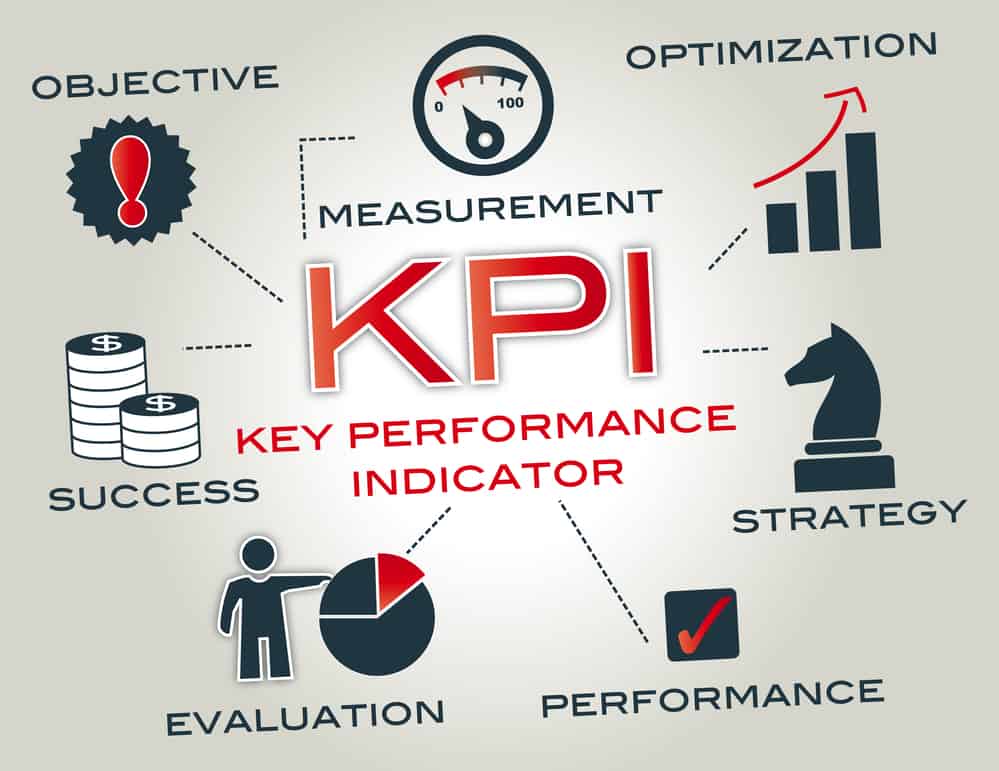
Staying ahead of the curve with social media goals and KPIs is easier said than done.
As platforms and algorithms continually evolve, smart brands make it a priority to review their strategies frequently.
The digital landscape just moves too fast to set it and forget it.
What worked last year may fizzle out this year. Either that or everyone’s now using the same strategy you are!
Trends come and go. New features pop up out of nowhere.
And consumers?
Their interests are fickle.
You have to keep up to keep them engaged.
That’s why we recommend taking a fresh look and adapting your social media strategy accordingly…
You should be considering:
- Platform trends shift – Stay current to avoid fading into obsolescence
- Consumer behaviors change – Adapt your content strategy to maintain engagement
- New features emerge – Leverage these to get an edge over competitors
- Algorithm updates – Refine content so it gets maximum visibility
And setting S.M.A.R.T. goals:
- Specific – Well-defined objectives
- Measurable – Track progress with KPIs
- Achievable – Ambitious but attainable
- Relevant – Align with brand mission
- Time-bound – Set a deadline
Tracking advanced KPIs could provide insights that will help you refine your strategy and really give you an edge over your competition.
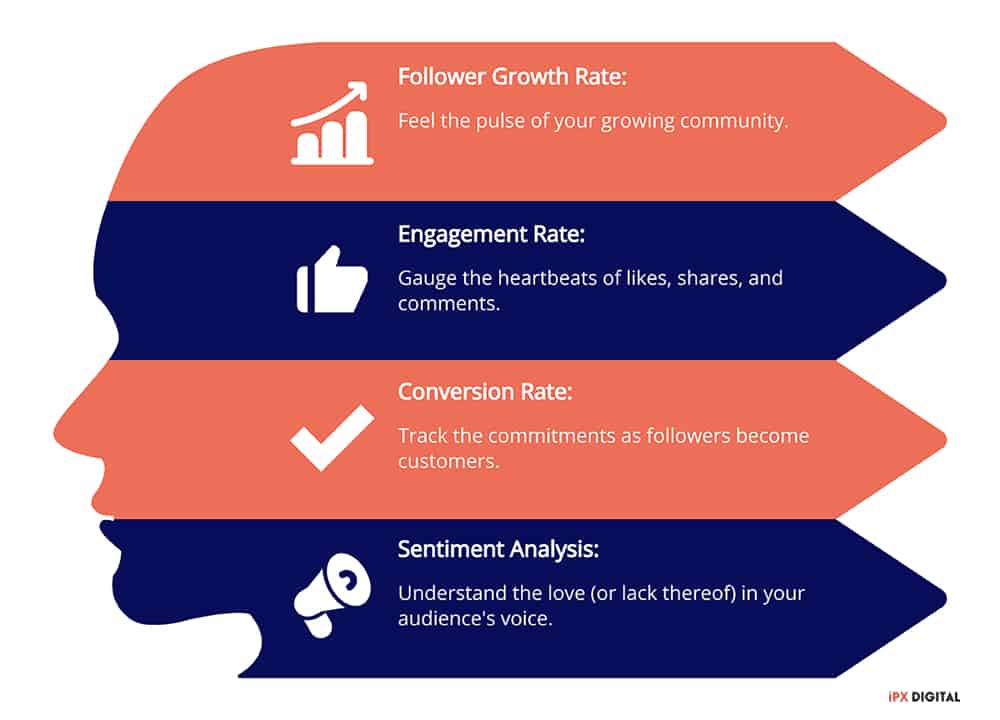
Consider these KPI’s for instance:
- Sentiment Shift Score: Track how sentiment towards your brand changes after key campaigns or news, revealing the emotional impact of your actions.
- Brand Advocate Growth: Measure the rise of organic brand champions mentioning you regularly (not influencer partnerships). Identify and nurture these valuable voices.
- Hashtag Hijack Rate: Monitor how often your branded hashtags are used by competitors, indicating potential brand confusion or weak ownership.
- Content Virality Index: Go beyond shares and likes. Develop a custom score based on the speed and breadth of content reach across various platforms (think memes, trends).
- Customer Service Response Time Sentiment: Track not just how fast you respond to customer inquiries, but also the sentiment of their follow-up comments. Did your response satisfy them?
- Poll-to-Purchase Conversion: Run interactive polls asking followers about desired features or products. Track how many of those voters actually convert to buyers after launch.
- UGC (User-Generated Content) Amplification Rate: Measure how often your audience shares and amplifies each other’s content in response to your prompts. This signals true community engagement.
- Story Branch Completion Rate: Design Instagram stories with branching decisions – see how many users follow each path to the end, revealing content preferences and attention spans.
- Livestream Shopping Revenue per Viewer: Go beyond basic viewership for live shopping events. Track revenue generated per unique viewer to evaluate efficiency and audience quality.
- AR Filter Usage Duration: If you use AR filters, measure how long people actively engage with them. This reveals deeper brand interaction than just downloads.
The key to doing this effectively is proactive optimization, not reactive catch-up.
Outpace your competitors by leveraging your analytics to make informed choices, and double down on what works and phase out what doesn’t.
Staying nimble and attentive will help you sustain momentum and stay ahead of your competitors.
Define New & Unconventional Social Media Marketing Goals
Recognizing the ever-shifting digital landscape, your brand needs to define clear, measurable social media goals and KPIs to ensure your strategy remains effective and targeted.
You can start by dissecting your brand’s vision into actionable objectives.
Are you aiming to boost brand awareness, drive sales, or enhance customer service?
Are you thinking a little more ‘outside the box’ and considering things like:
- Shift brand perception: Actively shape how people feel about your brand. Set goals like “increase positive sentiment mentions by 20%” or “reduce negative reviews by 15%.”
- Spark micro-communities: Instead of focusing on massive followings, aim for niche, engaged micro-communities around specific interests. Track growth and interaction within these communities.
- Challenge industry norms: Don’t just follow trends, set your own. Create goals like “become the platform’s most innovative content creator” or “launch a campaign that sparks industry-wide discussion.”
- Become a cultural touchstone: Aim for your brand to be woven into cultural conversations. Set goals like “be referenced in X number of popular memes” or “have our products used in a viral TikTok challenge.”
- Drive social impact: Align your brand with a relevant social cause and set measurable goals related to awareness, fundraising, or volunteer engagement.
- Unlock customer potential: Use social media to identify and nurture potential advocates and brand ambassadors. Set goals like “convert X% of engaged followers into brand advocates” or “increase customer-generated content by X%.”
- Fuel product innovation: Leverage social listening to gather real-time customer feedback and ideas. Set goals like “develop X new product features based on social insights” or “increase customer satisfaction by X% based on social feedback.”
- Become a thought leader: Establish your brand as an authority in your field. Set goals like “have our content shared by X industry influencers” or “increase website traffic from organic social searches by X%.”
- Foster employee engagement: Utilize social media to connect with and empower your employees. Set goals like “increase employee social media participation by X%” or “boost employee brand advocacy through social programs.”
- Create lasting experiences: Go beyond one-off campaigns and focus on building long-term relationships with your audience. Set goals like “increase repeat engagement rate by X%” or “develop X interactive social campaigns that foster connection.”
Once your goals are in sight, pinpoint the KPIs that’ll track your progress with precision.
Think engagements for awareness, conversion rates for sales, and response times for service.
Craft your strategy around these KPIs, ensuring each goal is SMART: Specific, Measurable, Achievable, Relevant, and Time-bound.
This strategic approach can transform your social media from a passive presence into a dynamic tool, fine-tuned for your brand’s success in the buzzing digital bazaar of 2025.
Your Target Audience
To really get at the core of what makes your brand thrive, you’ve gotta get to know your ideal customers on a personal level.
Understanding their needs, likes, dislikes – that’s how you can craft a social media strategy and set goals that speak right to them.
When you take the time to dig into who your people are and what makes them tick, you can connect with them in a way that feels natural, not forced.
To resonate deeply with your audience, consider these factors:
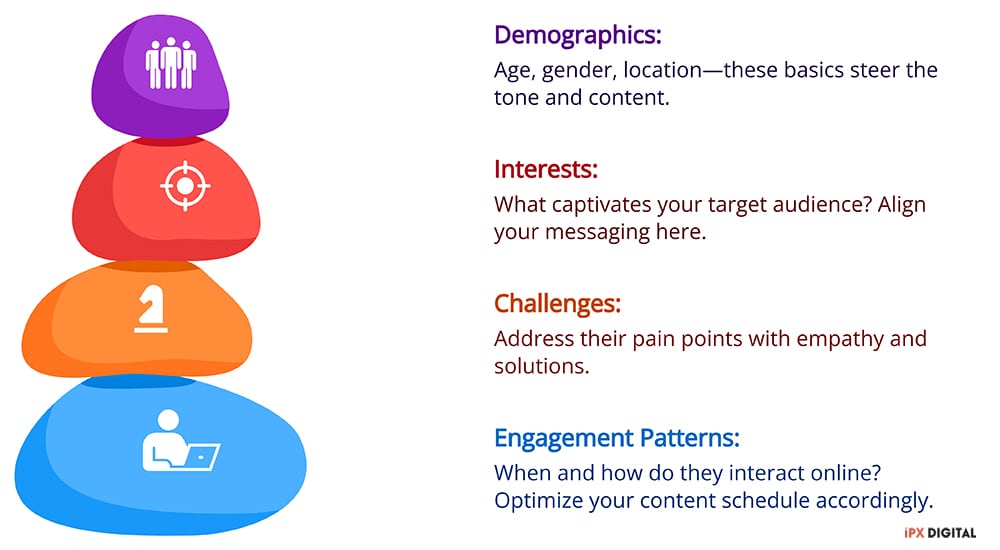
Remember, you’re crafting a strategy that’s not just strategic—it’s personal.
Your target audience isn’t a checkbox; they’re the lifeline of your brand, so tailor your approach with the finesse and insight they deserve.
Metrics Across Your Marketing Funnel
Building on your deep understanding of your target audience, it’s time to define social media goals and key performance indicators (KPIs) that align with each stage of the marketing funnel to foster engagement and strengthen brand affinity.
Below are just a few examples of practical applications of social media metrics:
Awareness Stage:
- Sentiment Shift Score: Implement sentiment analysis tools to monitor brand mentions before and after a new product launch. Track how the launch shifts overall sentiment from neutral to positive, showcasing its impact on brand perception.
Example: A clothing brand uses a #SustainableStyle hashtag campaign. Pre-campaign sentiment analysis shows mixed opinions on their sustainability claims. After the campaign, the score shifts significantly towards positive, indicating the campaign successfully reshaped perception.
- Brand Advocate Growth: Identify loyal followers who organically mention your brand frequently. Implement influencer marketing platforms to track advocate growth over time, demonstrating the effectiveness of nurturing community relationships.
Example: A tech startup identifies enthusiastic customers retweeting product updates. They run an advocate program, providing exclusive content and early access to new features. Advocate growth spikes by 30%, signaling successful community activation.
Consideration Stage:
- Hashtag Hijack Rate: Utilize social listening tools to track competitor usage of your branded hashtags. Develop a system to quickly counter hijacking attempts (e.g., clarifying brand ownership, engaging with hijackers). Monitor the reduction in hijacking rate as a measure of effective brand protection.
Example: A sports equipment brand’s #PeakPerformance hashtag gets used by a competitor. They launch a playful social media campaign highlighting the true meaning of the hashtag with user-generated content, reducing competitor hijacking by 25%.
- Content Virality Index: Develop a custom score combining share velocity and reach across platforms. Track how content like memes or trending challenges spread from initial post to widespread adoption. Identify viral hits and analyze content elements for future replications.
Example: A food company creates a funny TikTok recipe video using their product. The video’s Content Virality Index skyrockets as it gets shared and remixed across platforms, leading to a significant increase in website traffic and product sales.
Action Stage:
- Poll-to-Purchase Conversion: Create interactive polls asking followers about desired features or product variations. Track how many poll voters actually purchase the final product based on their selections. This reveals buyer preferences and informs future product development.
Example: A shoe brand runs an Instagram poll asking about preferred color options for a new sneaker. 40% of poll voters who chose “neon green” end up buying the final product, highlighting a clear demand for that colorway.
Customer Loyalty Stage:
- Customer Service Response Time Sentiment: Develop a system to track both response time to customer inquiries and the sentiment of their follow-up comments. Identify trends in negative sentiment for areas of improvement in customer service interactions.
Example: A travel agency implements a system that analyzes customer service chat transcripts. They discover a pattern of negative reactions after delayed refunds. By streamlining the refund process and offering empathetic apologies, they reduce negative sentiment by 15%.
- Livestream Shopping Revenue per Viewer: During live shopping events, track not just total revenue but also revenue generated per unique viewer. This metric pinpoints high-value audiences and reveals potential for audience segmentation and targeting for future events.
Example: A beauty brand hosts a live makeup tutorial with product recommendations. They segment viewers based on purchase history and target high-value segments with exclusive discounts during the livestream. Revenue per viewer for the targeted segment doubles compared to the general audience.
Through meticulous data analysis, these KPIs offer a strategic lens to assess your social media’s vitality.
Align Goals & KPIs with Your Objectives
Now that you’ve identified the heartbeats of your social media success, you should start to align these KPIs with your client’s ultimate vision to ensure each metric serves a purpose beyond the numbers.
Strategically mapping out your KPIs to their objectives bridges the gap between effort and impact.
Think of Google Analytics as your compass in this alignment process: it doesn’t just track the journey but also points you in the right direction.
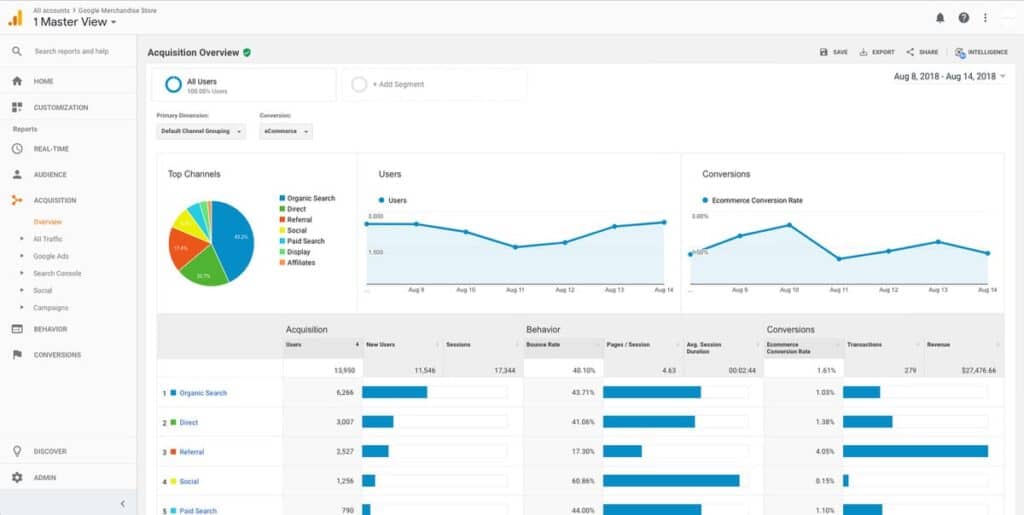
For instance, if your client’s objective is to increase brand awareness, focus on metrics like reach and impressions.
If conversion is the aim, scrutinize click-through rates and bounce rates.
This analytical approach ensures that you’re not just gathering data but interpreting it to create a narrative that resonates with your client’s aspirations.
Define Your Target Audience & Content Strategy
You’ve set your social media goals, but who are you speaking to?
At this point you should analyze your audience by segmenting them according to their demographics and behaviors to craft content that resonates.
To deepen brand affinity, you’ve got to get into their heads, empathize with their needs, and speak their language.
These 4 steps will help you connect on a level that turns followers into advocates:
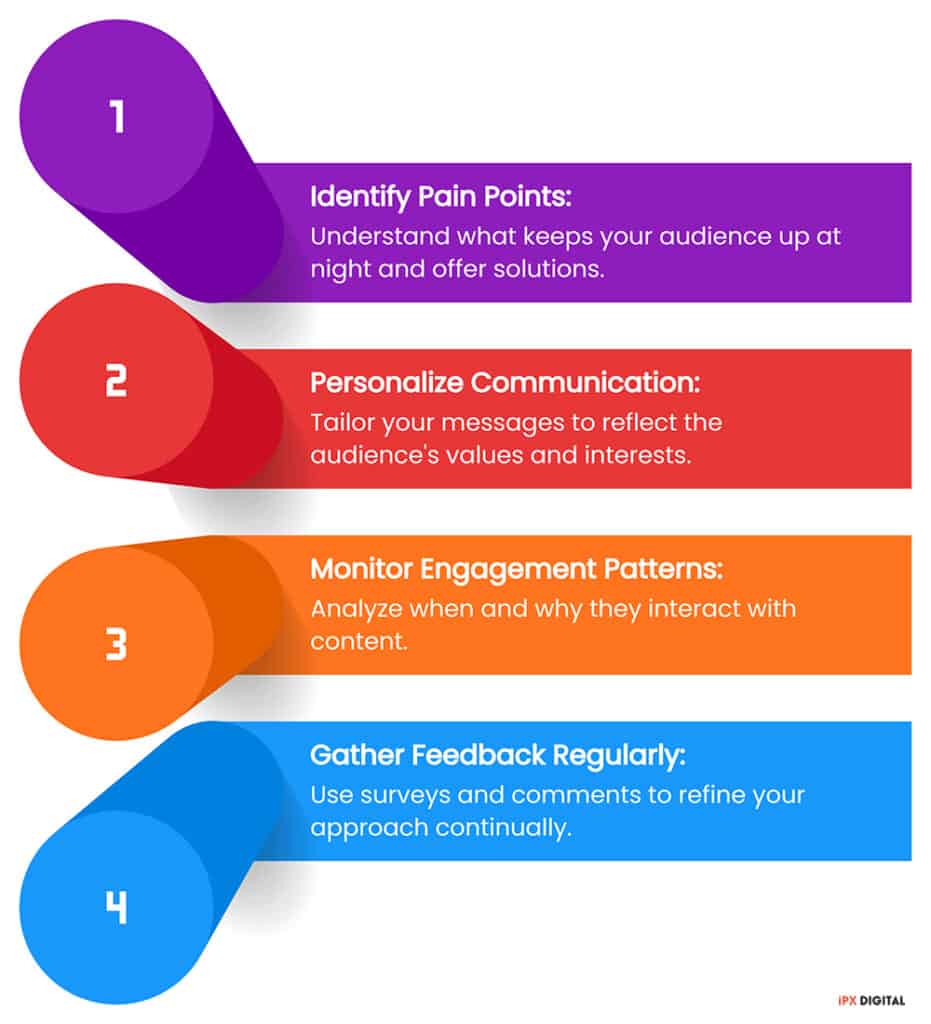
Differentiate & Categorize Your Audience
Getting your message across to a bunch of different people is tricky, right?
I mean, we’re all so different – young, old, men, women, city folk, country folk.
How can you make sure your social media posts hit the right notes with every single follower?
Try this…
Take some time to really study who’s following you.
Check out the stats on their age, location, gender, income – all those demographic details lurking in your analytics. That’s step one to figuring these folks out.
Then pay attention to how they actually act on social media.
What sort of posts do they tend to like or comment on?
When’s the best time to reach them – mornings, nights, weekends?
That behavior stuff will help you get a sense of their interests and habits.
Once you’ve done your research, you can start customizing your content for each group.
It’s like putting together a puzzle – each piece is a different demographic, and you need to figure out how they best fit together through your messaging strategy.
Piece by piece, you can put together posts that speak directly to every subset of your audience instead of being generic and speaking to all and none.
Tailor Content for Each Audience Segment
Crafting content tailored to each audience segment is pivotal, as it drives engagement by addressing specific interests and needs.
Your content strategy should hinge on delivering value that resonates uniquely with each group.
This strategic approach ensures your content strategy isn’t just a blanket broadcast but a series of targeted conversations that foster a deeper, more meaningful connection with your audience.
Guide Clients in Defining Their Target Audience
Before you jump into making content, it’s really important to figure out who you’re trying to reach.
Getting clear on your ideal audience lays the foundation for a thoughtful and strategic approach to social media.
Start by looking at data about your existing customers and market research to get a sense of demographics, interests, and behaviors that match your brand.
Then have some brainstorming sessions to imagine potential audience personas and what their lifestyle is like, and how your brand fits into their daily life.
Use that information to tune out the noise and zero in on the people most likely to actually engage with what you post.
Remember, clearly defining the people you’re speaking to focuses your branding efforts, which can supercharge your social media strategy.
Incorporate Brand Promise & Unique Value Proposition
Integrating your brand’s promise and unique value proposition into your social media content is a strategic move that can distinguish your messaging and resonate deeply with your defined target audience.
To ensure you’re hitting the mark, consider the following:
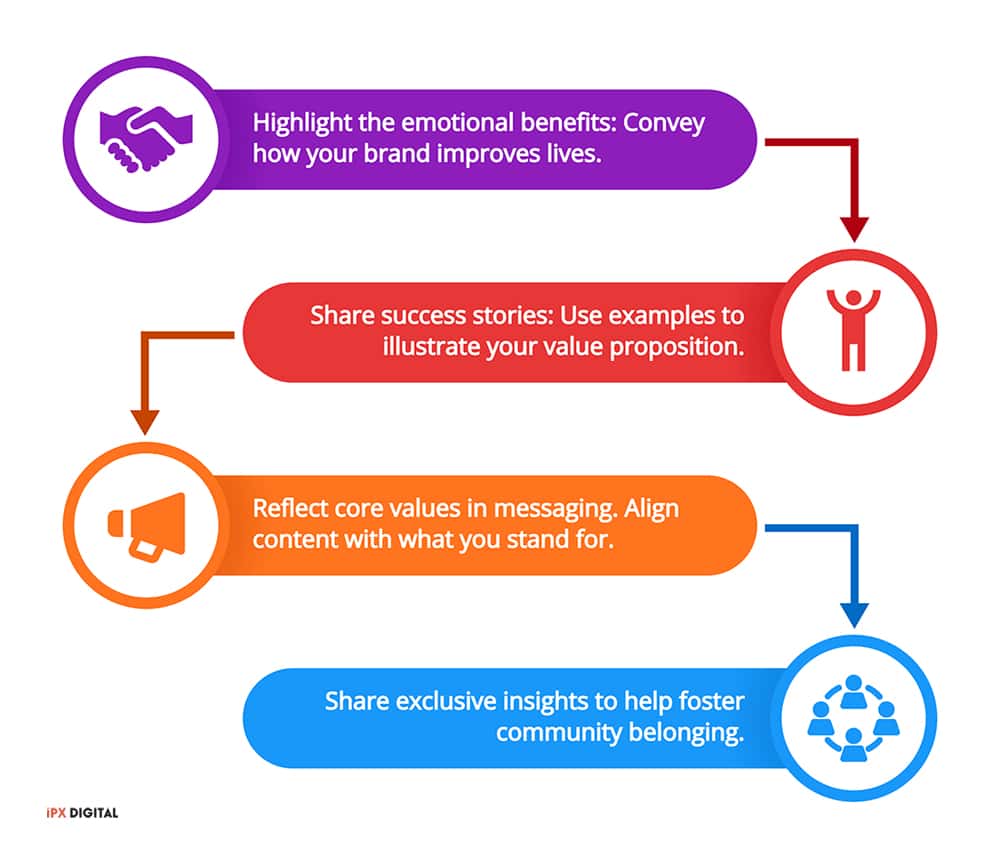
Select the Right Social Media Platforms
When it comes to picking social media platforms for content marketing, you’ve gotta think about what’s gonna be the best fit for your specific brand and goals.
For starters, think about whether you’re looking to publish more in-depth, long-form content versus quick, snackable stuff that might go viral.
Platforms like Facebook and LinkedIn tend to work better for the former, while X (formerly Twitter) and TikTok are primed for more viral hits.
You’ll also want to consider how different platforms can support your SEO efforts.
Getting links and engagement on sites like Medium and Reddit can give your content a boost in Google rankings.
So do some digging into the latest social media statistics and analytics for your brand.
Figure out where your target audience is hanging out online, and what types of content performs best on each platform.
That’ll show you where your messaging will land most effectively so you can pick your social channels strategically.
Choose Content Platforms Strategically
Picking the right social media sites for your business is key if you want to make a real splash online.
You’ve gotta choose platforms that mesh with the kind of content you create and the goals you have for marketing.
When you find spaces that truly click with your audience, it forges a connection.
Your content comes alive, people engage with it more, and you build a community of loyal followers rallied around the core topics you cover.
Consider these factors:
- Audience Demographics: Match your target demographic with the platform’s user base.
- Content Format: Choose platforms favoring the format of your content—be it video, images, or text.
- Engagement Levels: Look for platforms where users are actively engaging with content like yours.
- Brand Goals: Align platforms with specific objectives, whether it’s awareness, lead generation, or community building.
Be analytical about where your content will thrive, creative in presenting it, and strategic in your platform choices to stir genuine excitement and connection.
Long-form vs Viral Platforms
When it comes to social media, there are two main types of platforms: those for in-depth, long-form content and those for quick, shareable posts with viral potential.
For long-form content, YouTube is the king. It’s a great place to tell stories and share detailed information.
People love user-generated content (UGC) on YouTube, so be yourself and let your creativity shine through.
On the other hand, Instagram Reels and TikTok are the go-to platforms for shorter, snappier content that has a high chance of going viral.
These platforms are all about strategy and creating content that immediately grabs people’s attention.
Keep an eye on trends and tailor your posts to the fast-paced audience that’s always scrolling and looking for the next big thing.
Integrate SEO-Friendly Platforms
Integrating SEO-friendly platforms into your social media strategy can boost your brand’s online visibility and engagement.
In choosing the right platforms, consider how they complement your content curation efforts and enhance your SEO footprint.
Here’s what to look for:
- Platform Authority: High-ranking sites extend your reach.
- Content Lifespan: Platforms where content remains searchable extend its value.
- User Engagement: Interactive features that promote sharing boost SEO signals.
- Analytics: Robust tools help refine your strategy for greater impact.
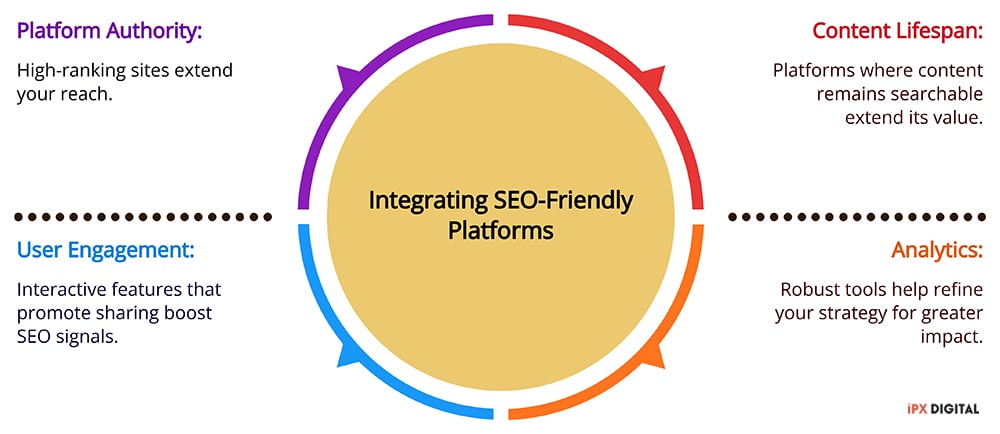
Analyze Trends & Insights
Want to give your social media strategy a refresh?
One of the best things you can do is dive into the data and analyze trends and insights.
I know looking at analytics may not sound super exciting, but it provides so much useful info to help improve your strategy.
Start by looking at the built-in analytics in each platform – check out Facebook Insights, Twitter Analytics, Instagram Insights, etc.
Look at your top-performing content – which posts get the most engagement and shares?
What types of content does your audience respond to best – video, images, links?
You can also use Google Analytics to see how social media impacts your website traffic.
Which platforms drive the most referrals to your site? What posts lead to spikes in traffic?
Analyzing this data will reveal what your followers truly care about. You may notice image-based posts do really well on Instagram but video performs better on Facebook.
Use these insights to shape the content you create, and cater to each platform’s strengths.
It’s a good idea to check in on the analytics regularly to spot new trends.
Social media moves quickly so it helps to get into the habit of reviewing and adjusting your strategy as your audience’s interests change.
Use Google Analytics to Find Your Most Effective Platforms
Google Analytics (GA) can help you determine which platforms are most effective for your business.
Connecting your social accounts allows GA to track how much referral traffic each platform drives to your website.
You’ll get insights into things like:
- Which platform results in the most website clicks
- Where your site traffic spikes when you post on social media
- Which networks drive the most engaged users (they spend more time on site)
These metrics will help you see how social media influences your business goals. You’ll be able to track conversions and more.
You should do plenty of A/B testing and focus your efforts on the networks that bring in the most relevant traffic.
If Instagram is your top referrer, put more energy into creating eye-catching visual content.
Keep an eye on the numbers over time too.
As your audience grows and changes, you may see traffic patterns shift. The platform sending the most visitors this quarter may not be the same next quarter.
Connecting social and site analytics does take a bit more effort, but it pays off big time since you’ll know exactly where to spend your time and resources.
Craft Engaging & Impactful Content
As you rethink your approach to social media, you should establish 2-3 content pillars that resonate with your brand’s core message and offerings.
You’ll need to intertwine educational material within these pillars to capture those at the initial stages of the customer journey.
Strategically, allow for a mix of social proof and promotional posts in your content calendar to build trust while driving conversions.
Create 2-3 content pillars to categorize content
To effectively revamp your social media presence in 2025, start by defining 2-3 content pillars that will guide the creation of engaging and impactful content.
These pillars will form the backbone of your strategy, allowing you to deliver consistent value to your audience.
When considering your pillars, focus on crafting educational content that aligns with your brand’s expertise and audience interests.
- Inspire: Share success stories that provoke aspiration and motivation.
- Educate: Offer tutorials, tips, and insights that position you as a thought leader.
- Entertain: Create relatable and enjoyable content that resonates on a personal level.
- Connect: Foster engagement with conversational and interactive content.
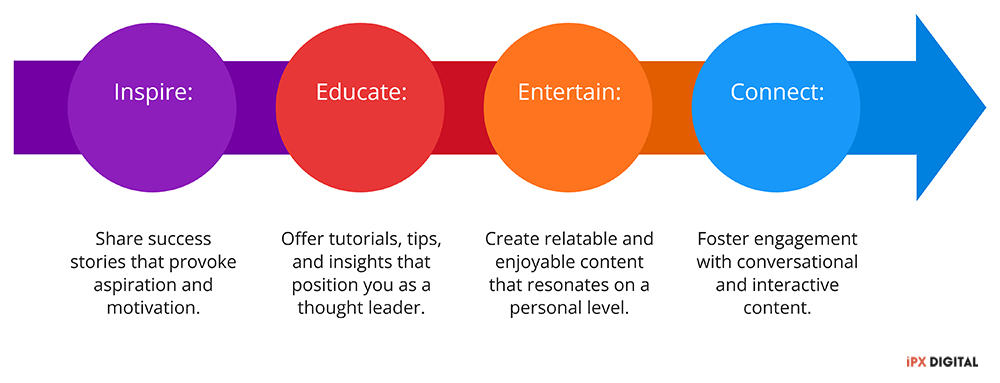
Align Content Pillars with Brand Promise & Offer
Creating cohesive, resonant social media content is easier when you start with your brand promises.
Take a step back and think – what does your brand stand for? What value do you provide to customers? Your content pillars should reinforce those core brand messaging.
For example, if outstanding customer service is a big part of your brand identity, regularly share content that highlights that.
Create videos of your team going above and beyond for a customer. Or interview loyal customers about their experience.
Use storytelling to bring your brand promises to life.
Share the origins of your business and what motivates you to deliver on your brand vision every day.
Help your audience get to know the real people behind the brand.
The goal is to create content that contributes to the greater brand narrative. Every post should tie back to communicating your unique value and selling points.
Don’t just share random updates – have purpose behind reinforcing your brand identity.
It takes work, but the effort pays off through cohesive messaging and audience resonance.
When your content consistently aligns with what your brand stands for, you drive home why customers should care about you.
Educational Content for Top-of-The-Funnel Goals
Sharing educational content is such an important part of marketing these days.
- It establishes your brand as a thought leader.
- It answers pressing questions, reducing barriers to entry.
- It encourages sharing, expanding your reach organically.
- It sets the stage for a customer journey based on trust and value.
It’s a great way to provide value to potential customers without immediately selling to them.
When you take the time to create informative articles, e-books, webinars, and other content that teaches people something useful, you build trust and establish your company as an authority in your field.
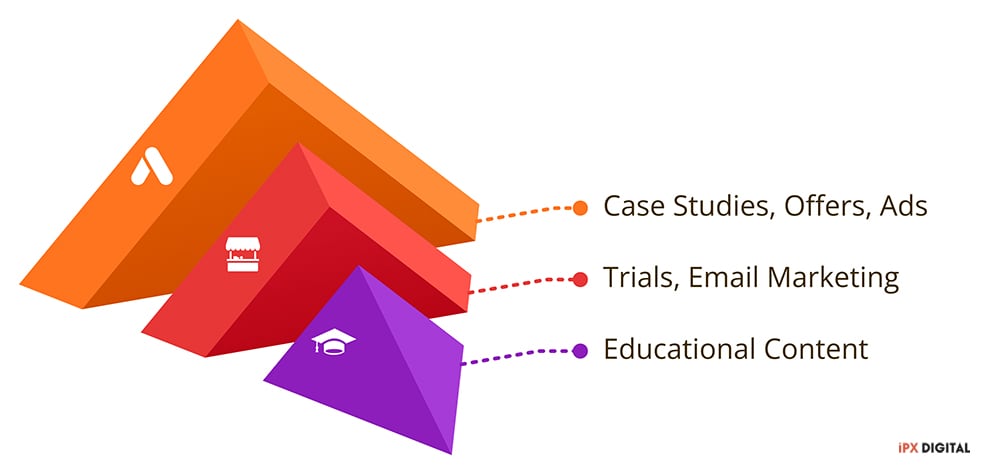
People want to do business with brands they know, like and trust.
So by generously offering your expertise through education, you’re nurturing those relationships over time.
You show prospective customers that you truly understand their pain points and can provide solutions.
And naturally, when someone needs what you’re selling later on, they’ll think of your helpful brand first.
So rather than hard-selling right away, focus on sharing your knowledge.
Provide tailored content that speaks to your audience’s needs. Build connections by demonstrating how much you care about helping them, not just making a quick sale.
Do that consistently, and you’ll earn business from satisfied customers who feel like they know you.
E-Commerce Strategies to Showcase Social Proof
Showcasing social proof can be extremely effective for e-commerce brands looking to boost credibility and conversions.
But it needs to feel authentic, not salesy.
Start by taking an audit of your best customer testimonials.
Look for stories that pack an emotional punch and reinforce your brand values. Quotes from real people resonate so much more than generic praise.
User-generated content also provides powerful social proof when featured.
Re-share customer posts, photos, and reviews showcasing your products. Their real-life perspective builds trust.
And don’t forget influencer partnerships.
Work with nano or micro influencers who authentically align with your brand. Their endorsements feel like trusted recommendations from a friend.
Avoid slapping on random numbers or dubious claims just to showcase “social proof.”
The focus should be relatable stories and truths from real users.
Use multiple dimensions – testimonials, UGC, influencers, reviews – to build a well-rounded proof case.
Meeting customers where they are and addressing their concerns is what matters most.
Schedule Promotional Content in Your Content Calendar
In the chess game of content marketing, always reserve strategic squares for your promotional content within your calendar to ensure you don’t miss out on key marketing opportunities.
Your promotions are pivotal in driving sales and engagement, but they must be carefully timed and thoughtfully integrated into your overall content strategy.
Here’s how to do it:
- Identify major holidays and events relevant to your brand for targeted promotions.
- Plan flash sales or exclusive deals that create urgency and buzz.
- Integrate user-generated content to build trust around your promotions.
- Leave room for spontaneous promotional opportunities that may arise.

Strategically planning your promotions ensures they resonate with your audience, maximizing both reach and impact.
Remember, every post is a move towards checkmate in the content marketing game.
Implement Content Creation & Curation Strategies
A key part of revamping your social media marketing is to establish smart content creation and curation strategies.
This means consistently publishing engaging, high-quality content on your platforms, as well as strategically sharing content from others.
For original content, focus on creating posts, images, videos, and Stories that align with your brand voice and resonate with your audience.
For example, an outdoors brand can publish hiking tips and beautiful nature photography.
For curated content, share industry news, user-generated content about your products or services, and posts from influencers in your niche.
The goal is to provide a diverse mix of content that educates and entertains your followers.
Always add value by offering commentary, opinions, or advice when sharing curated posts.
Maintain a consistent posting schedule and leverage analytics to determine what types of content drive the most engagement.
Role of Social Media Managers in Content Creation
Social media managers play an important role in developing engaging content and working with other teams to ensure a cohesive brand voice across platforms.
Here are some tips on how they can maximize their impact:
- Collaborate with marketing and communications teams on overarching content strategies and campaigns. Attend creative brief meetings to stay aligned on goals, themes, visual assets, and key messages that can be adapted for social platforms.
- Partner with product teams and community managers to identify user-generated content, customer testimonials, or employee spotlights that bring an authentic voice to social channels. Brainstorm creative ways to repurpose this type of content.
- Work with designers and videographers to create social-friendly graphics, infographics, and short video clips that capture viewers’ attention and are optimized for different platforms.
- Maintain an editorial calendar to map out content across platforms and complement other teams’ initiatives. For example, promote a webinar from the events team or an ebook from the content team.
- Use project management tools like Asana to collaborate with other teams, assign tasks, track content approvals, and streamline workflows.
- Schedule regular check-ins with cross-functional partners to assess what’s resonating, what could be improved, and how to adjust strategies based on performance data and audience insights.
- Foster a culture of experimentation by A/B testing content and creatives and sharing top-performing updates with internal stakeholders.
The key is keeping lines of communication open, planning integrated campaigns, and capitalizing on the breadth of skills across teams.
With strong collaboration, social media managers can create cohesive experiences that support broader business goals.
Be Resourceful & Knowledgeable with Content Creation Tools
Social media managers need to leverage a wide variety of tools to create engaging content.
Here’s how to maximize resources:
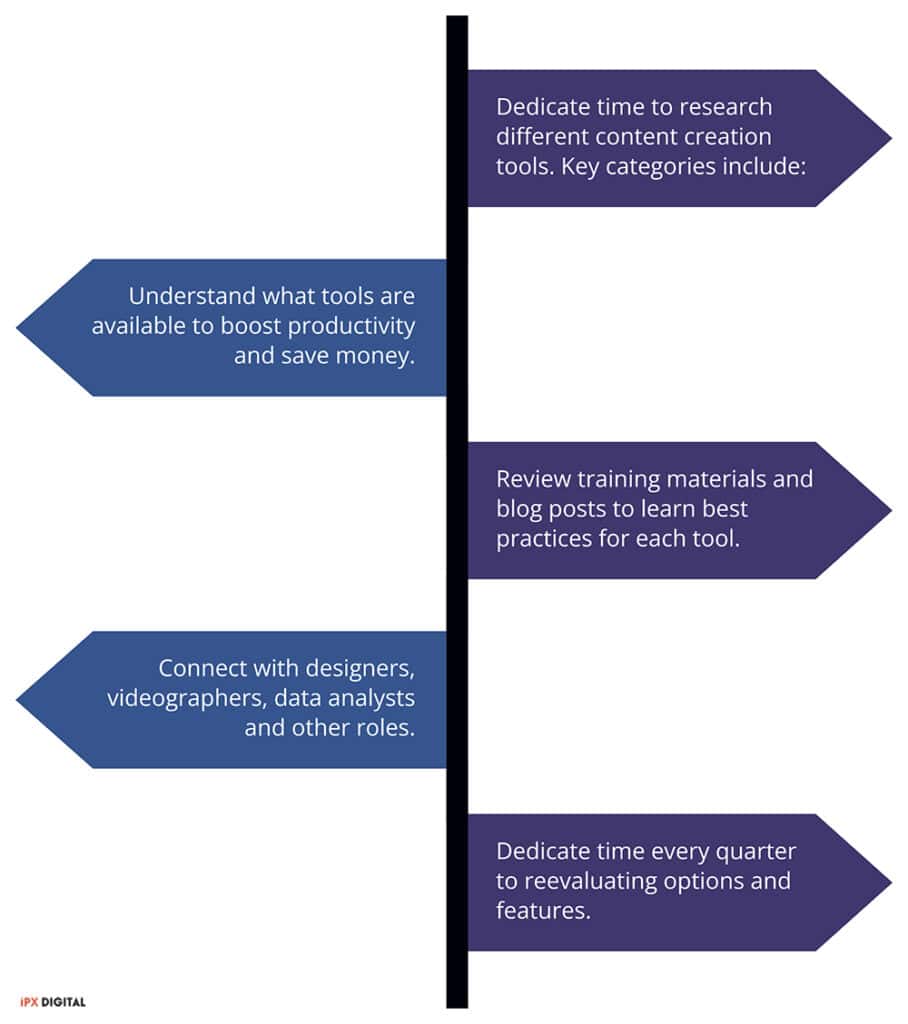
Learn Your Options
Dedicate time to research different content creation tools. Key categories include:
- Design: Canva, Adobe Creative Cloud
- Video: Biteable, Animoto
- Analytics: Sprout Social, Hootsuite
- Scheduling: Later, Buffer
Evaluate free plans and explore all features so you can learn which tools are right and most efficient for each project.
Find Free Resources
Many tools offer free images, icons, music, and more.
For example, Canva has a library of customizable templates and stock photos.
Understand what tools are available to boost productivity and save money.
Follow Best Practices
Review training materials and blog posts to learn best practices for each tool.
For example, proper hashtag usage changes across platforms.
Optimizing content for each network drives better engagement.
Collaborate Across Teams
Connect with designers, videographers, data analysts and other roles.
Learning their preferred tools, exchanging resources, and collaborating on projects makes the process smoother.
Stay Updated
Content creation tools constantly add new features as social media evolves.
Dedicate time every quarter to reevaluating options and features.
Sign up for update emails and industry newsletters so you always know what’s new.
Establish Clear Communication with Creative Teams
Connecting with your creative and video teams is really important for creating great content.
Setting up open communication channels will allow you to make sure everyone is on the same page throughout the creative process.
Here are a few tips:
- Define Your Goals: Clearly articulate the emotional response you want from your LinkedIn audience.
- Collaborate on Ideas: Use brainstorming sessions to merge creativity with strategic insights.
- Set Deadlines: Align on a content calendar that respects creative processes while meeting campaign objectives.
- Provide Feedback: Constructively critique drafts to refine and elevate the final product.
This approach not only streamlines your workflow but also fosters a culture of collaboration that can transform your LinkedIn presence.
Breathe Life into Your Social Media Strategy with Content
Breathing life into your social media strategy hinges on crafting and curating content that embodies your brand’s voice and vision with precision.
To thrive on platforms like X (Twitter), you need to blend creativity with strategic thinking.
Analyze your audience’s preferences and the platform’s trending topics to generate content that resonates and engages with them.
Start by devising a content calendar that aligns with your brand milestones and cultural events.
Remember, it’s not just about original content; curation plays a pivotal role.
Find industry leaders and relevant discussions to retweet and comment on, creating a dialogue that positions your brand as a thought leader.
This balance of creation and curation will keep your Twitter presence dynamic and authentic.
Implement a Content Strategy Through Content Pillars
Having outlined your content calendar, it’s now time to implement the creation and curation strategies that will populate your social feeds with engaging, brand-aligned posts.
You’re crafting a narrative that captures the essence of your brand and resonates with your audience.
Here’s how you can evoke emotion and connection through your content:
- Share behind-the-scenes stories to foster authenticity and trust.
- Create problem-solving content that addresses your audience’s pain points.
- Use powerful visuals and storytelling to create a memorable brand experience.
- Engage with user-generated content to build community and show appreciation.
Each piece should be thoughtfully aligned with your strategic goals, reflecting your brand’s voice and vision.
Conclusion
The social media landscape is constantly shifting like sand dunes in a desert, forcing brands to continually adapt their strategies or risk being left behind.
As we look ahead to 2025, it’s clear that staying competitive requires more than just revamping your content and metrics.
To truly thrive, you must foster meaningful relationships with your audience built on trust and transparency.
Take the time to not just analyze their data, but empathize with their passions and concerns.
Craft content that informs and inspires them. Facilitate genuine connections through interactive platforms and experiences.
Essentially, it comes down to perceiving your audience not as faceless metrics, but as real human beings.
Speak to them that way, through messaging that resonates on an authentic, emotional level.
This heart-led approach, rooted in purpose and possibility, will allow you to not just survive, but flourish amidst the winds of change in the digital landscape ahead.

